A Fly (larva) in the Ointment
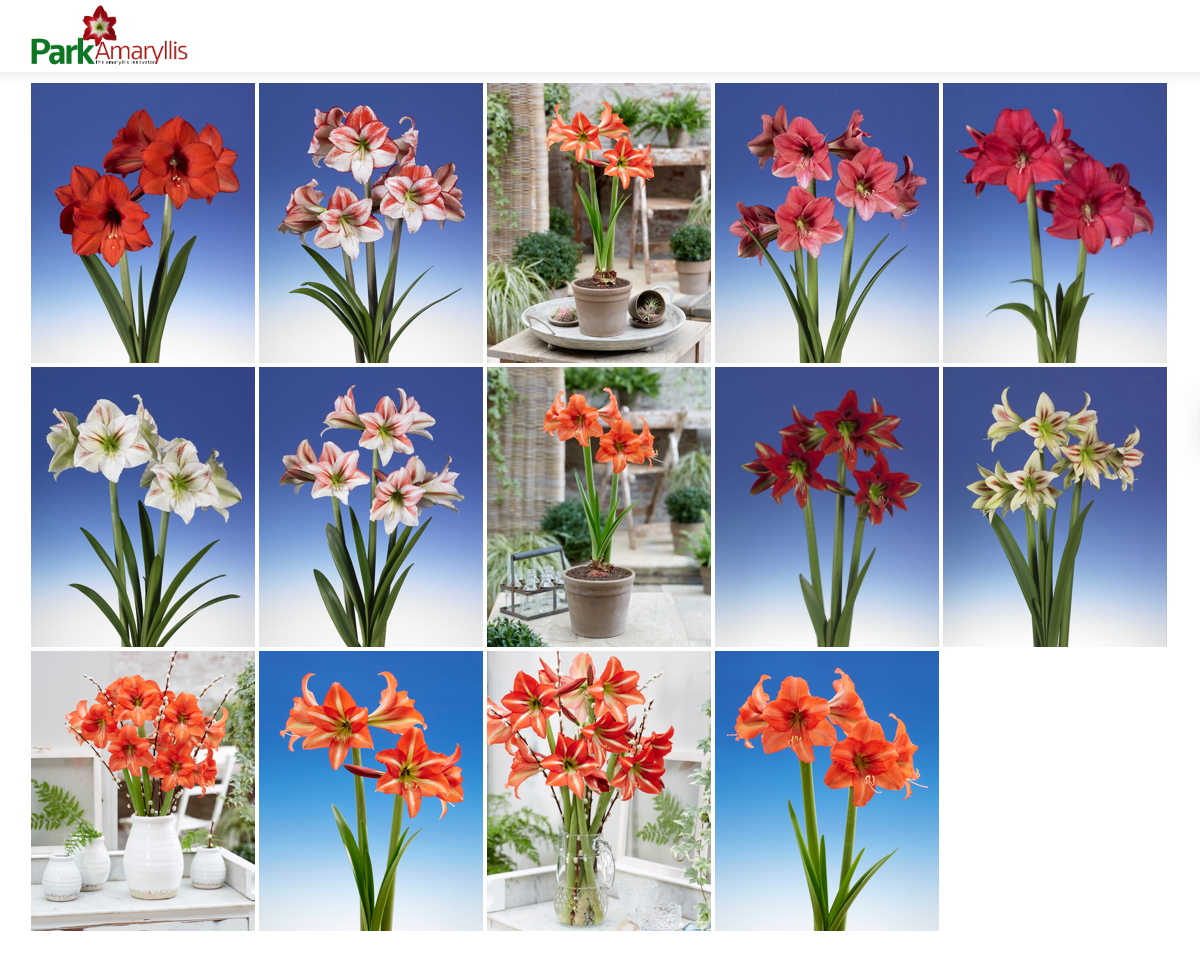
Back in early autumn of 2019, Emaryllis was searching for sources for a couple of new amaryllis cultivars, and stumbled across a surpise offering by one particular mail-order house. In addition to getting a fair price on some huge ‘Wild Amazone’ bulbs, three varieties from another breeder were on offer for the first time…and three of each were promptly added to the cart! Upon receiving the shipment, initial excitement over the large and firm ‘Wild Amazone’ bulbs turned to concern during close inspection of the smaller bulbs.
A little pressure from the thumb yielded a soft, squishy feel for some of them. It is always good to carefully inspect bulbs before planting. Usually any softness is simply localized rot where the bulb was bruised, and simply cutting the damaged tissue away and letting the bulb dry a few days is all that is needed. In this case however, something else was to blame. Lesser bulb fly is cousin to the much larger Narcissus bulb fly (NBF) which bedevils Hippeastrum bulbs grown outdoors (as well as Narcissus, etc.). When a female fly lays her eggs near ground level, the hatchlings quickly burrow down into the bulb. Typically one or two of these larvae (maggots) will be found hollowing out the bulb and making quite a wet mess at the base of bulb and through the fleshy leaf scales. A sudden failing of the main growth, and subsequent production of many offsets clues in the savvy grower. Lesser bulb fly is a much smaller species than NBF in all respects, and therefore many more of its larvae can hapily munch on a juicy amaryllis bulb.
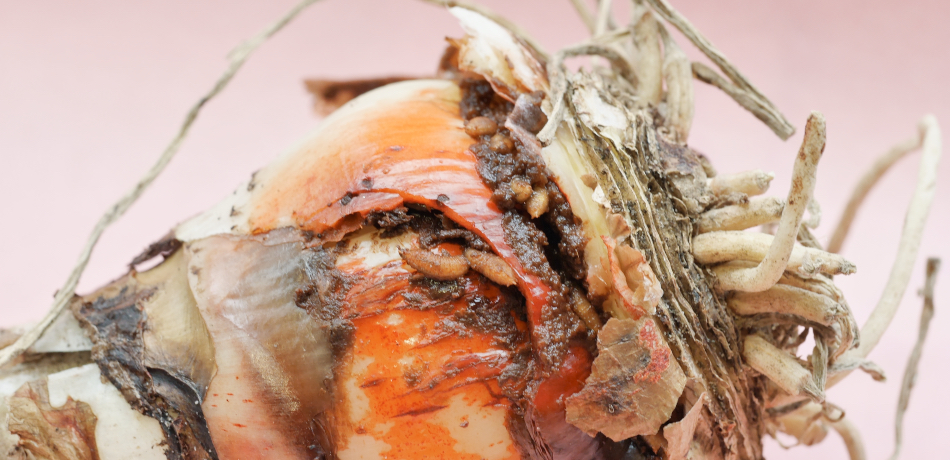
There you have it, closer and more thorough investigation told the tale of woe that many outdoor producers face. Quite a few of these were heavily infested and in need of peeling back to solid, healthy tissue. None had lost the growing point, so at least some flowering occured and Emaryllis could post some results.
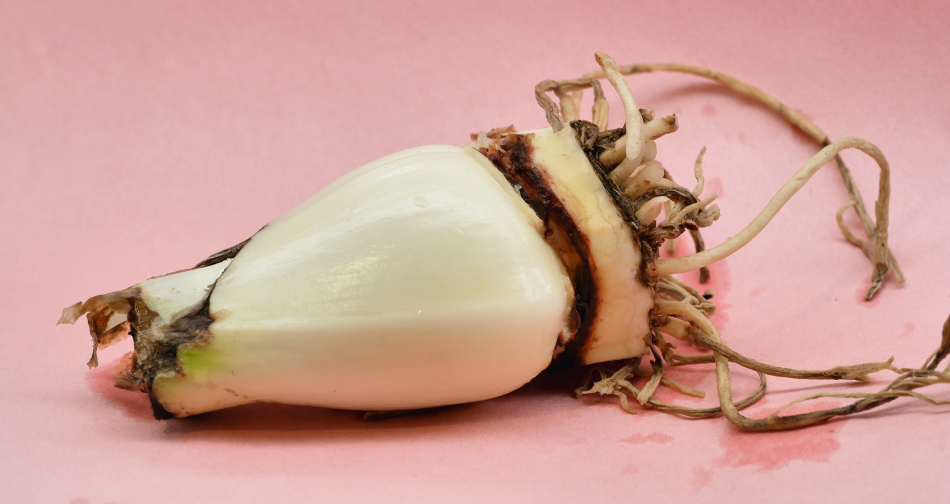
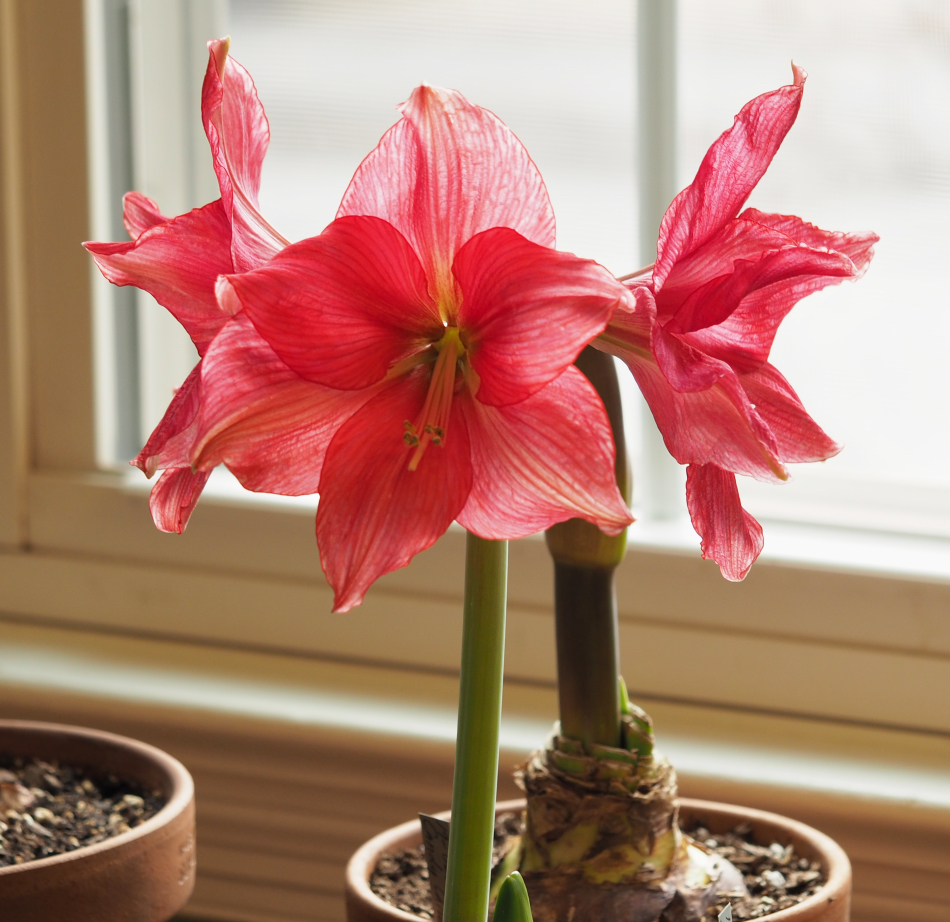
While Emaryllis has experienced issues with these insect pests at home, commercially grown bulbs shouldn’t pass inspection to make export, period! The seller seemed to realize the situation, as the varieties were quickly removed from their website.
The sad part is, we would all like to see what Park Amaryllis is cooking up, but for 2020 it looks like their stock is not being offered. They need to check up on the licensee growing these! Let’s all hope that things get squared away soon. With the disappearance of the Sonatini website, these smaller cultivars will find an audience.
Some advice from Emaryllis. One of the best methods we have found for controlling bulb flies is all natural if not inexpensive. Two applications of beneficial nematodes, one early in the growing season (mid-late spring) and one a few weeks before fall harvest seems to work incredibly well. While a mix of species has been tried, the readily available Steinernema feltiae seems the most economical and effective. The bonus is that an application can help control many other pests including weevils, cutworms and leafminers throughout your garden, just make sure the amaryllis pots get a good dose!
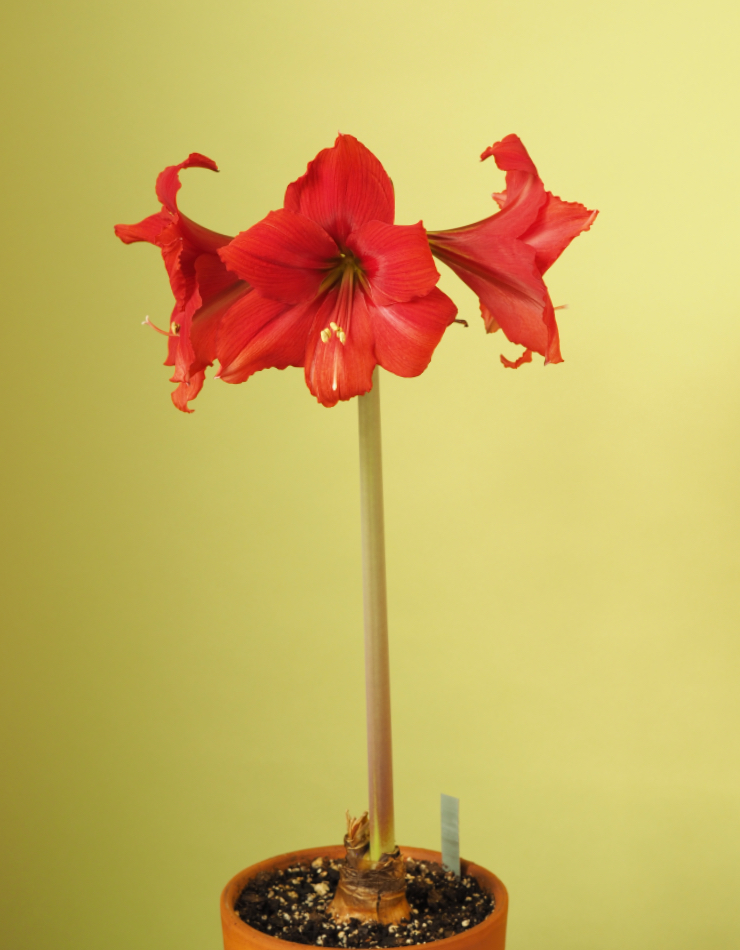

Question, a bit off-topic, but I really need to know. I see in the photo of the cleaned up bulb that a basal plate of about half an inch thickness (? or maybe 3/8″?) has grown. It looks a little thick, proportionately.
I’ve been told that thick basal plates can stunt hips’ growth; that it blocks their uptake of nutrients. Is that indeed the case? I am in the process of repotting my collection now. Ran into one bulb – smaller than it should be – with at least 3/4″ basal plate. I trimmed that plate and dusted with cinnamon, and am letting it cure for a few days. I know the bulb will put out new roots eventually, and bloom again too; but at the same time I worry about the loss of living roots, even though I have received bulb shipments that have no living roots, and the bulbs have been solid.
This trimming is what I’ve been told is a good idea. Do you agree? What is the function of that plate, and is its becoming thick really an issue?
By way of contrast, I’ll just note that the thicker plates seem to occur, in my limited observation, on bulbs that aren’t making offsets. I haven’t seen them on those which seem to naturally want to produce offspring.
Or… is it something in cultural practices that pushes any bulb one way or the other?
I really want to understand this. Hope you can help me.
Joan,
There probably hasn’t been specific study on the physiology of this in Hippeastrum, but I’ll take a stab at it. Horticulturally, it has been demonstrated that trimming down an old, large basal plate can create much better root production, and improved plant vigor as a result. I do this regularly when repotting just as in the case you mention. It feels like you will be setting the plant back, but as you say, they are quite capable of recovery and regrowth.
The basal plate is the compressed stem of the plant. As the bulb grows, leaf bases (leaf scales or cataphylls) are left behind and slough off after serving as a tunic and the stem becomes longer, tougher and nearly woody. Root formation is likely encouraged by hormone production (auxins) from the active growing point. As the bottommost part of the basal plate becomes farther from the growing point and less conductive, it stops receiving these hormones and stops initiating new roots, and old ones die off. At this point, new roots are only able to sprout from the uppermost part near the bulb itself, and only from the outer edges. Removing the tough, older basal plate exposes tender, conductive tissue under the entire surface of the bulb, which can now root from any part of that surface in addition to the outer edges.
I don’t know how this works out for Hippeastrum in nature, but perhaps constant production of offsets means that the older mother bulbs simply get squeezed out in many cases. The complex amaryllis hybrids certainly grow more quickly and therefore this intervention is more likely to be needed for them to remain vigorous in cultivation. Genetic variation means that some hybrids seem to rarely require this intervention, where others do.
I hope this helps. Thanks for checking out Emaryllis.com!